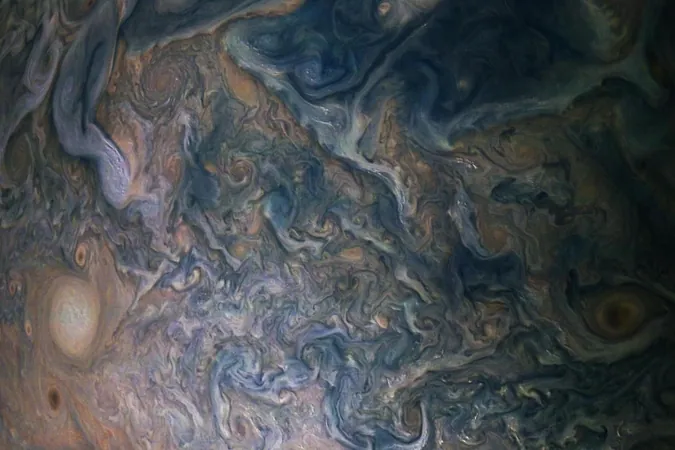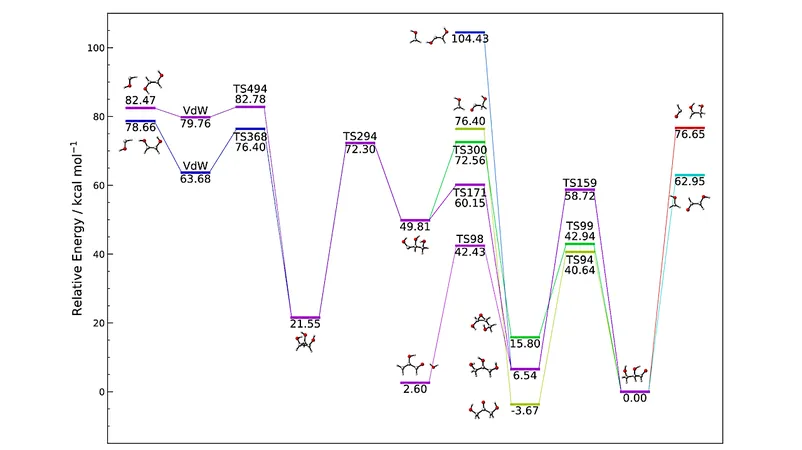
Jupiter's Wild Weather: Scientists Confirm Ammonia Slushees Are A Reality!
2025-04-16
Author: Jia
Jupiter's Mysterious Atmosphere Unpacked
In an astonishing revelation, scientists have cracked the code of Jupiter's upper atmosphere, unveiling a phenomenon that sounds like science fiction: mushballs made of ammonia that rain down during fierce storms. Initial doubts surrounded the 2020 theory, but fresh research has confirmed that these slushy hailstones not only exist on Jupiter but could potentially occur on all gas giants in our solar system.
Mushballs Confirmed!
New findings from UC Berkeley have validated the existence of these intriguing mushballs—slushy balls of ammonia and water encased in a frozen shell—that plummet through Jupiter's atmosphere during thunderous storms. These unusual hailstones act like delivery systems, transporting ammonia to the planet’s deeper layers, and unsettling its atmospheric makeup.
Chris Moeckel, a UC Berkeley grad student, and astronomy professor Imke de Pater led the research, admitting they initially found the theory too bizarre to accept. "There’s no way in the world this is true," said Moeckel. After three years of trying to disprove the theory, he found it unstoppable.
Stormy Weather on a Gigantic Scale
Jupiter, renowned for its tumultuous storms and swirling cyclones, is primarily composed of hydrogen and helium, with hints of ammonia. Recent studies show that violent weather activity—a mix of thunderstorm clouds below the visible layer—gives birth to mushballs about 40 miles (64 km) beneath the clouds. Ice and ammonia get mixed at high altitudes, forming the slushy hailstones that eventually make their way down, redistributing ammonia and water throughout the atmosphere.
Revealing the Mysteries of the Atmosphere
This concept was originally proposed to solve a longstanding mystery regarding the absence of ammonia in certain regions of Jupiter. The mushballs rise and fall within the atmosphere, redistributing essential components, but their bizarre journey makes the upper and deeper atmospheres chemically distinct. "It’s like a bizarre system triggered deep within the planet, going all the way to the top and then diving back down," Moeckel explained.
A 3D View of Jupiter's Weather Wonders
In an exciting advancement, researchers have created the first 3D visualization of Jupiter’s upper atmosphere, solidifying the reality of mushballs. This groundbreaking visual not only confirms the existence of these slushy hailstorms but hints that similar weather events might also occur on Saturn, Uranus, and Neptune.
The Shallow vs. Deep Dilemma
Using data from sophisticated instruments like the Juno spacecraft and the Hubble Space Telescope, scientists explored the depths of Jupiter's weather patterns. They discovered that while many weather events occur shallowly, some penetrate significantly deeper into the atmosphere, leading to the conclusion that traditional observations fail to represent the planet's complexity. "Just because the surface looks turbulent, it doesn't mean the deeper layers are the same—they’re surprisingly stable," Moeckel stated.
What's Next for Jupiter?
As missions continue to unravel the secrets of Jupiter and beyond, this revelation about mushball hailstorms could change our understanding of atmospheric dynamics on gas giants. It seems the more we learn, the more mysterious and fascinating these colossal planets become!




 Brasil (PT)
Brasil (PT)
 Canada (EN)
Canada (EN)
 Chile (ES)
Chile (ES)
 Česko (CS)
Česko (CS)
 대한민국 (KO)
대한민국 (KO)
 España (ES)
España (ES)
 France (FR)
France (FR)
 Hong Kong (EN)
Hong Kong (EN)
 Italia (IT)
Italia (IT)
 日本 (JA)
日本 (JA)
 Magyarország (HU)
Magyarország (HU)
 Norge (NO)
Norge (NO)
 Polska (PL)
Polska (PL)
 Schweiz (DE)
Schweiz (DE)
 Singapore (EN)
Singapore (EN)
 Sverige (SV)
Sverige (SV)
 Suomi (FI)
Suomi (FI)
 Türkiye (TR)
Türkiye (TR)
 الإمارات العربية المتحدة (AR)
الإمارات العربية المتحدة (AR)